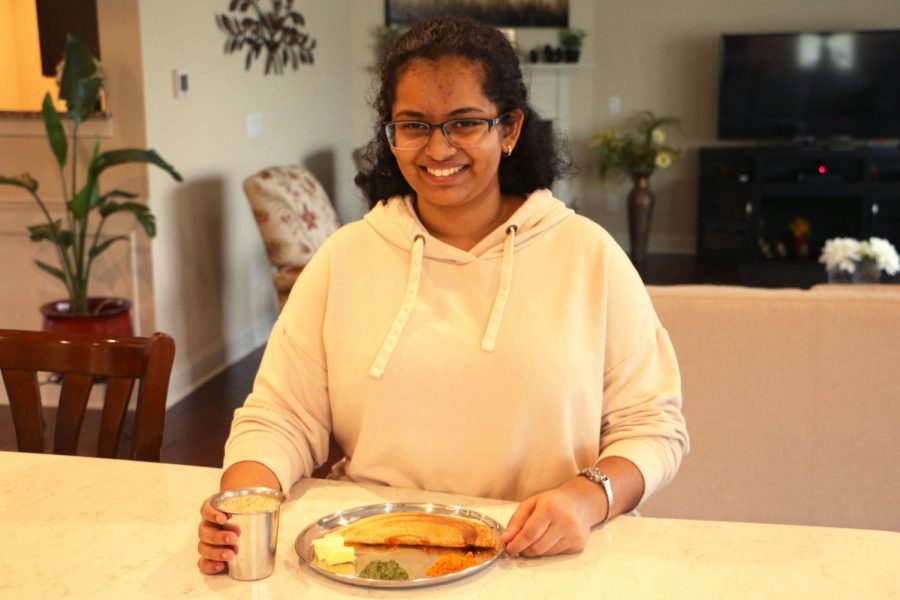National Immigration Day, which will occur next Thursday, is a day geared to reflect on the numerous cultures that make up the melting pot culture that makes up the United States.
However, according to senior Sneha Srivasta, who lived in India until sixth grade, immigration still poses a challenge.
Even seemingly trivial topics become a difficult part of transitioning into living in Carmel.
She said, “It’s not really difficult, like a challenge, but I think (those little issues are) something that’s important to a lot of immigrants. It’s the fact that people can’t pronounce your name correctly. It’s obviously not a huge challenge … But I think that in school it’s really important for people to be able to pronounce your name correctly, or at least make an effort to pronounce it correctly. Your name is a large part of your identity, so knowing that people acknowledge that, the effort for people who want to be inclusive is really important.”
Srivasta is not alone, junior Jeana Yeo, who immigrated from South Korea, describes the hardships she had while coming to the United States.
She said, “Definitely I experienced a lot of racism because I wasn’t able to speak English, I got bullied a lot in elementary school, and it was a hard time communicating with people, and I felt really stupid because I couldn’t speak English.”
Yeo also said she finally started fitting in during middle school as she was able to speak English by that time and found it easier to make more friends.
“Overall, I feel like I was much more used to the culture,” she said.
Yeo also said how Carmel has changed her.
“I feel like it has pros and cons, but I feel like Carmel really has more opportunities,” she said, “I feel like by being here, I got to explore more hobbies than I could (before). I feel like in Korea, I would have definitely been more into studies, (but) here I can listen to music, to art, et cetera.”
On the other hand, Srivasta said, “It’s not just Carmel, or more specifically, the school, I think this changed me a lot because the diversity in this school is really high compared to the rest of Indiana in general. I’ve met a lot of people like myself, you find people with your interests, whether it be your culture or not. It’s easier to find your group of people when there’s so many people in such a diverse group of people.”
According to English as a New Language (ENL) teacher Elizabeth Kahl, who teaches foreign students English and improves their language skills, said the hardest challenge she saw her students go through was feeling comfortable to practice English.
“We know with language acquisition, the best way to perfect your English speaking and writing skills is to practice; however … they sometimes feel uncomfortable to either say the wrong thing or the wrong word or mispronounce things, so the de facto thing for them to do is to be silent, so I think our class it’s a safe space to practice as much English as possible without the fear of someone thinking differently of you,” she said.
Kahl said she teaches a multitude of students from numerous backgrounds.
“A lot of our students, we have a significant population from Venezuela, as well as Egypt and the Middle East, we have students from Israel, from Japan, from China, so those are some of the cultures we’ve been able to experience so far,” she said.
Overall, Kahl says that immigration is a general positive, and it shows the strength of foreign CHS students.
“Imagine coming to a new country in your adolescent, kind of formative years, and not only having a culture shock but there’s always a lot of different factors (like) leaving your family behind, leaving your language behind, seeing your parents struggle, maybe yourself struggle,” she said.

Kahl said, “It’s not easy, so I think, at times, it makes them a lot stronger than they give themselves credit for.”
“At the end of all of this, most of our students here,” she added, “even through their growing pains, are happy to live in the United States, and for most of them, there’s no place they’d rather be.”
Even though moving away is a difficult task for most students, Srivasta said she still finds ways to carry over her original Indian culture, such as her love for Bollywood.
“The biggest (carryover) I (felt) is still the same, my love for Bollywood music, movies, all the cultures the movies encompass really.” She said, “It was one of the biggest cultural aspects that I bonded with, with other Indian immigrants in this school because that’s something that was common for us for a long time.”































![What happened to theater etiquette? [opinion]](https://hilite.org/wp-content/uploads/2025/04/Entertainment-Perspective-Cover-1200x471.jpg)














































![Review: “The Immortal Soul Salvage Yard:” A criminally underrated poetry collection [MUSE]](https://hilite.org/wp-content/uploads/2025/03/71cju6TvqmL._AC_UF10001000_QL80_.jpg)
![Review: "Dog Man" is Unapologetically Chaotic [MUSE]](https://hilite.org/wp-content/uploads/2025/03/dogman-1200x700.jpg)
![Review: "Ne Zha 2": The WeChat family reunion I didn’t know I needed [MUSE]](https://hilite.org/wp-content/uploads/2025/03/unnamed-4.png)
![Review in Print: Maripaz Villar brings a delightfully unique style to the world of WEBTOON [MUSE]](https://hilite.org/wp-content/uploads/2023/12/maripazcover-1200x960.jpg)
![Review: “The Sword of Kaigen” is a masterpiece [MUSE]](https://hilite.org/wp-content/uploads/2023/11/Screenshot-2023-11-26-201051.png)
![Review: Gateron Oil Kings, great linear switches, okay price [MUSE]](https://hilite.org/wp-content/uploads/2023/11/Screenshot-2023-11-26-200553.png)
![Review: “A Haunting in Venice” is a significant improvement from other Agatha Christie adaptations [MUSE]](https://hilite.org/wp-content/uploads/2023/11/e7ee2938a6d422669771bce6d8088521.jpg)
![Review: A Thanksgiving story from elementary school, still just as interesting [MUSE]](https://hilite.org/wp-content/uploads/2023/11/Screenshot-2023-11-26-195514-987x1200.png)
![Review: "When I Fly Towards You", cute, uplifting youth drama [MUSE]](https://hilite.org/wp-content/uploads/2023/09/When-I-Fly-Towards-You-Chinese-drama.png)
![Postcards from Muse: Hawaii Travel Diary [MUSE]](https://hilite.org/wp-content/uploads/2023/09/My-project-1-1200x1200.jpg)
![Review: "Ladybug & Cat Noir: The Movie," departure from original show [MUSE]](https://hilite.org/wp-content/uploads/2023/09/Ladybug__Cat_Noir_-_The_Movie_poster.jpg)
![Review in Print: "Hidden Love" is the cute, uplifting drama everyone needs [MUSE]](https://hilite.org/wp-content/uploads/2023/09/hiddenlovecover-e1693597208225-1030x1200.png)
![Review in Print: "Heartstopper" is the heartwarming queer romance we all need [MUSE]](https://hilite.org/wp-content/uploads/2023/08/museheartstoppercover-1200x654.png)



